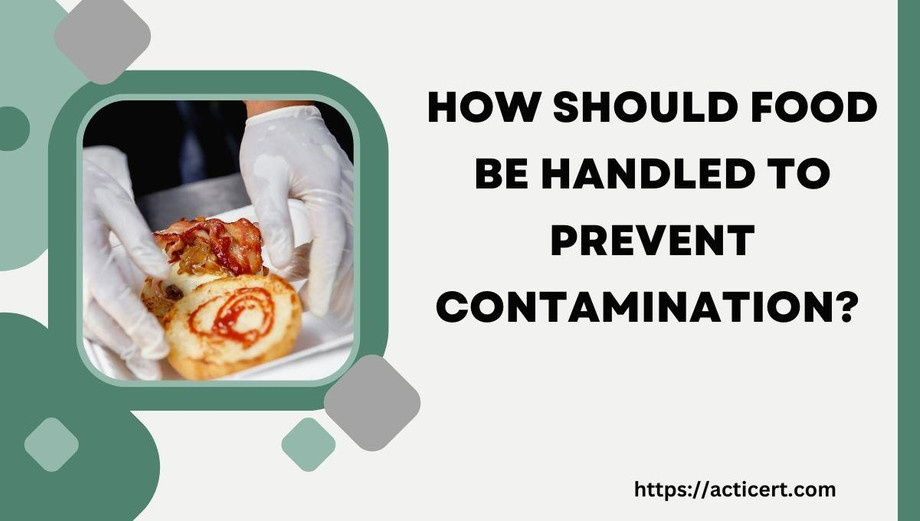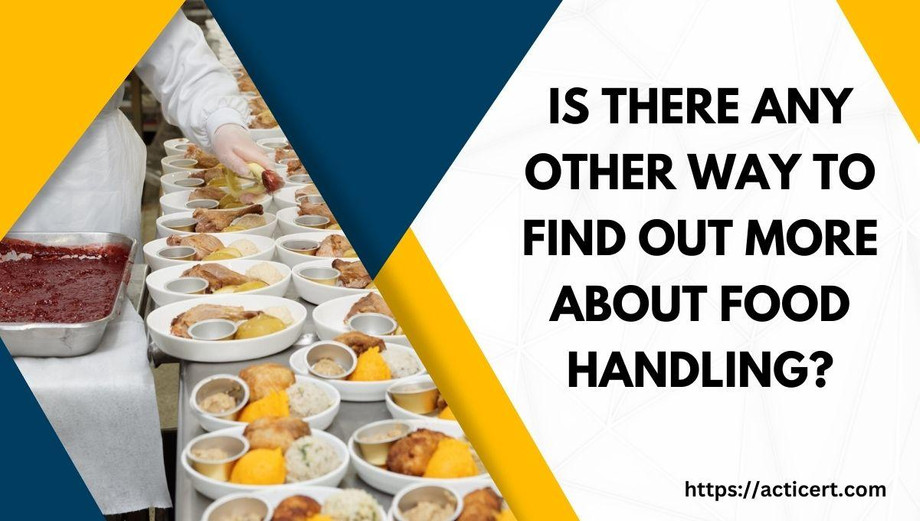Are you looking for some guidelines you should follow when handling food? Well, you are at the right place. Proper management of food is essential to maintaining public health. If you don't do so, it can cause food-related diseases, which can have a drastic impact on both individuals and the community.
But now the question is how can you ensure safe food handling, given how important it is to stop food-related illnesses from spreading. These comprise a few realistic measures with which you need to comply. In this blog, we will discuss them one by one in detail. So, are you ready to dive in? Then, let us get going.
How should food be handled to prevent contamination?
One of the critical issues facing the food sector is food safety, for which preventive measures are necessary. Sadly, there isn't anything that you can do to prevent food contamination. However, there are a few strategies to lower the risk.
Step 1 Cleanliness is Key
The very first step and the significant factor in preventing food illness is cleanliness. By this, we mean that you have to ensure everything is clean. If so, wash hands and surfaces properly. Washing hands before and after handling food is essential as it can prevent spreading germs around the kitchen and other foods.
Are there any proper techniques for it? Yes.
- You can first wet your hands with clean, running water and apply soap.
- Next, use soap to create foam by rubbing your hands together.
- You then want to give your hands a quick scrub.
- After that, thoroughly wash your hands under cold, running water.
- Lastly, use a fresh towel to dry your hands or allow them to air dry.
To prevent the spread of bacteria, you can also wash surfaces, including kitchen surfaces, utensils, and chopping boards.
Step 2 Separate to avoid cross-contamination
The second step is to keep the food separate as it helps to avoid cross-contamination of food. For this, you can use separate cutting boards and utensils. Indeed. Using separate chopping boards and utensils for raw vegetables, meat, poultry, and fish is feasible.
Additionally, you can follow tips on colour coding or labelling cutting boards. It can also help you to prevent cross-contamination of food, comply with food safety regulations, support efficient workflows, and instil confidence in your customers if you are running a food business, ensuring your commitment to maintaining food cleanliness and safety.
Furthermore, you can follow proper food storage practices. For example, maintaining a controlled temperature is crucial for food safety if you store food in a refrigerator. Additionally, keep in mind to store raw meat, poultry, and seafood apart from other items.
Step 3 Cook to safe temperatures
Cooking food at safe temperatures is the third step. Of course. The way we cook food is as essential as food preparation and storage. Improper cooking is one of the prominent causes of food poisoning. Therefore, you should cook food to 75 degrees or higher. To kill most forms of food poisoning germs, you should cook almost all foods at this temperature and thoroughly, especially meat and poultry. Besides, you can use a food thermometer to monitor the temperature during cooking.
Step 4 Chill Properly
Harmful bacteria can spread at room temperature. Increased bacterial count increases the chances of food contamination, which can make you sick. So, it is essential to refrigerate food immediately to allow quick cooling.
Additionally, for perishable foods, including meat, poultry, fish, dairy products, and all cooked leftovers, you can refrigerate them within 2 hours to stop almost every dangerous germ from growing. While cooling, remember to maintain the right temperature. You should set the refrigerator temperature at 4 degree Celsius or below and the freezer at -15 degree Celsius or below. It will reduce food waste and stop the spreading of diseases.
Step 5 Keep track of expiration dates and food recalls
Ultimately, you can educate yourself about product recalls and expiration dates to prevent food-related illnesses or injuries. When there is any risk to public health, the food inspection agency issues recalls. These risks could come from any circumstance, foreign materials like metal or plastic pieces, or contaminated cleaning solutions. Visit the websites of food inspection agencies to remain informed about food recalls. To ensure the quality of the food, it is also crucial to verify the expiration dates. It is more necessary for perishable items since it highlights the material's efficacy and safety.
After discussing all those five steps to food handling and preventing contamination in detail, we are sure you must have gained some understanding about it.
Is there any other way to find out more about food handling?
However, if you are in the food industry and want to advance your knowledge and abilities in a variety of food safety-related areas, want to change the world by helping to prevent and control food-related diseases, or think that working in this capacity will be enjoyable, you can sign up for food handler certification course at ActiCert.
It is a division of BITTS testing services and offers candidates the opportunity to gain in-depth knowledge and understanding of food handling procedures through its training program. The instructors here are certified to train you in the standardised, ministry-approved food handler course material.
What's the hold-up, then? Register now. After completing the registration process, you must pay online for your chosen course session. Visit us now for more information!


